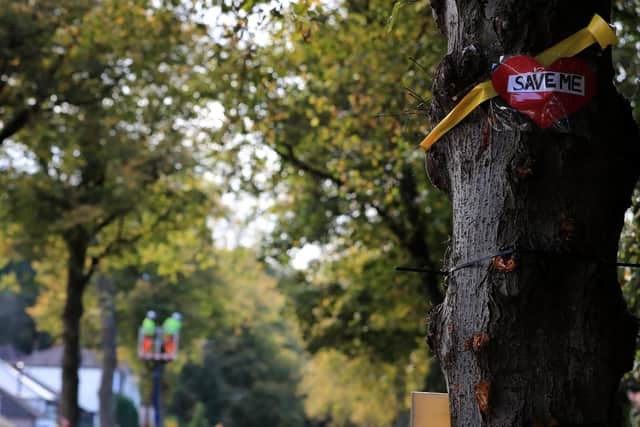Wigan has higher tree coverage than English average
and live on Freeview channel 276
Analysis conducted on behalf of Friends of the Earth by mapping experts Terra Sulis has identified lone and street trees, which were not previously captured.
It shows 13 per cent of Wigan is covered by trees.
But in England, tree canopy cover stands at just 12.8 per cent, of which only 10 per cent can be attributed to woodland. Across the European Union, woodland cover rises to 38 per cent.
Advertisement
Hide AdAdvertisement
Hide Ad

The Government's current goal is to increase tree coverage to 16.5 per cent by 2050, but climate charity Friends of the Earth said this is "inadequately low", and argued double the current figure would be more reasonable.
Meanwhile, 43 per cent of neighbourhoods in England have less than 10 per cent tree cover, while 84 per cent have less than 20 per cent coverage.
There are also huge regional differences – Surrey Heath has the most tree coverage at 36.1 per cent, while South Holland in Lincolnshire has the least with just 2.2 per cent.
March 21 is the United Nations' International Day of Forests. The theme this year is "Forests and Health", raising awareness of the health benefits higher tree coverage can have on the local population.
Advertisement
Hide AdAdvertisement
Hide AdMike Childs, head of science, policy and research at Friends of the Earth, said: "The Government should be aiming to double tree cover in England by 2050 to ensure that people, no matter where they live or what their income, can experience the mental and physical health benefits that trees bring.
"Current targets for tree planting are woefully inadequate and overlook the devastating impact that timber and wood imports from countries such as Brazil, China and Russia wreak on nature globally.
"We need many more trees for farming, urban cooling and absorbing harmful carbon emissions. The Government must get behind a far more ambitious plan to boost tree numbers and adopt this as an official target."
Tree coverage roughly tracks levels of deprivation across the country, with the most deprived areas generally having fewer trees.
Advertisement
Hide AdAdvertisement
Hide AdCensus figures from the Office for National Statistics show 47 per cent of 143,105 households in Wigan are not deprived in four key areas – housing, education, health and employment.
It means the area ranks 163rd for tree coverage but is the 201st least-deprived.